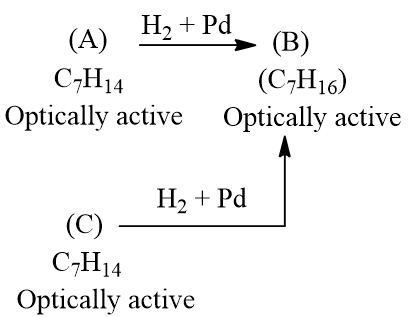Physics-
General
Easy
Question
A body is travelling in a straight line with a uniformly increasing speed. Which one of the plot represents the changes in distance (s) travelled with time ( )
)
The correct answer is: 

 [
[ ]
]
It is an equation of parabola
Related Questions to study
Maths-
The value of integer n for which the function  has
has  as its period is
as its period is
The value of integer n for which the function  has
has  as its period is
as its period is
Maths-General
Maths-
Maths-General
Maths-
Maths-General
physics-
The effective capacitance between points  and
and  shown in figure. Assuming
shown in figure. Assuming  F and that outer capacitors are all
F and that outer capacitors are all  F is
F is

The effective capacitance between points  and
and  shown in figure. Assuming
shown in figure. Assuming  F and that outer capacitors are all
F and that outer capacitors are all  F is
F is

physics-General
physics-
The four capacitors, each of 25  F are connected as shown in figure. The DC voltmeter reads 200 V. the change on each plate of capacitor is
F are connected as shown in figure. The DC voltmeter reads 200 V. the change on each plate of capacitor is

The four capacitors, each of 25  F are connected as shown in figure. The DC voltmeter reads 200 V. the change on each plate of capacitor is
F are connected as shown in figure. The DC voltmeter reads 200 V. the change on each plate of capacitor is

physics-General
physics-
For the circuit shown in figure the charge on 4 F capacitor is
F capacitor is

For the circuit shown in figure the charge on 4 F capacitor is
F capacitor is

physics-General
Maths-
The minimum and maximum values of  are
are
The minimum and maximum values of  are
are
Maths-General
physics-
Figure shows a network of eight resistors, each equal to 2 , connected to a 3V battery of negligible internal resistance. The current
, connected to a 3V battery of negligible internal resistance. The current  in the circuit is
in the circuit is

Figure shows a network of eight resistors, each equal to 2 , connected to a 3V battery of negligible internal resistance. The current
, connected to a 3V battery of negligible internal resistance. The current  in the circuit is
in the circuit is

physics-General
physics-
The equivalent resistance between  in the given circuit is
in the given circuit is

The equivalent resistance between  in the given circuit is
in the given circuit is

physics-General
chemistry-
Which of the following is/are the rate determining step(s) of the given reaction?

Which of the following is/are the rate determining step(s) of the given reaction?

chemistry-General
Maths-
Maximum value of 
Maximum value of 
Maths-General
Maths-
The minimum and maximum values of  are
are
The minimum and maximum values of  are
are
Maths-General
chemistry-

(A) and(C) are different compound s and rotate the plane-polarised light in the same direction, andboth are dextrorotatory. Both (A) and(C) do not show diastereomers, whichof the following statements are correct?

(A) and(C) are different compound s and rotate the plane-polarised light in the same direction, andboth are dextrorotatory. Both (A) and(C) do not show diastereomers, whichof the following statements are correct?
chemistry-General
chemistry-
Which of the following dienes and dienophiles could be used to synthesise the following compound (A) ?

Which of the following dienes and dienophiles could be used to synthesise the following compound (A) ?

chemistry-General
Maths-
16 sin 
16 sin 
Maths-General





